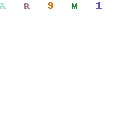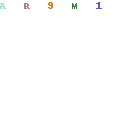Passport, visa and customs
Swedish citizens can stay 30 days without a visa in the Philippines. However, the passport must be valid for at least 6 months after arrival. The passport must also contain at least one unstamped page. It is important to see customs that you get an arrival stamp in the passport.
Vaccinations and health
We recommend that you review your basic protection against diphtheria, polio and tetanus. Hepatitus A . Dukoral (a cholera vaccine) may be needed as well as prophylaxis with malaria tablets. Consult a health center for advice at least one month before departure. Check if you have insurance that covers health care in the Philippines and also what it covers in that case. For example, home transport in the event of a more serious accident / illness can be extremely costly. Feel free to bring a small set of “first aid” with patches, headache tablets, etc. Be aware that the water you drink is either boiled or bottled. Skip the ice for drinks / drinks. Eat only fruit that you peel yourself. The raw salad has to wait until you get home! Avoid raw seafood and raw fish. Wash your hands often – especially before meals. The pharmacy sells over-the-counter medicines for “tourist stomach” that you can take with you. Remember to drink a lot in the heat. Bring sunscreen, sun hat and mosquito repellent. Rabies still occurs in Indonesia, so avoid contact with stray animals. In many places, healthcare is not particularly well developed, so it can be difficult to get good care
Weather and clothing
The Philippine Islands are located 800 km off the southeast coast of Asia. The archipelago consists of about 7100 islands and skerries that have a maritime tropical climate, which means that the climate is warm and humid all year round. The two most important islands are Luzon in the north and Mindanao in the south. Variations in temperature are due to differences in altitude, hot and humid on the plains and cooler in the mountains. The islands are well watered but the Western Philippines has a clear dry season between March and May. Typhoons that are common hit the north east coast. CLOTHES: light ones are recommended all year round. Jackets for cool evenings. Rainwear for the rainy season – June to November
Currency and exchange
The currency of the Philippines is called Peso and is abbreviated PHP. These can be exchanged in Sweden before departure. 100 PHP corresponds to approximately SEK 19.47 (12 / 04-16). It is possible to pay with cards such as VISA and MasterCard in large stores, hotels and more expensive restaurants, but it is not appropriate to leave the card out of sight. Therefore, try to bring cash as much as possible. ATMs are available in several places in the cities. Exchanging Swedish kronor gives a bad exchange rate, in which case it is better to bring American dollars. The banknotes should be in good condition to be approved for exchange. If you are going to an exchange office in the Philippines, choose an authorized one. Although others attract with better course.
Transport and communications
At Luzon there are Jeeps, buses and taxis. There are also many bicycle taxis and motorcycles with sidecars. Then remember to negotiate before you get into these vehicles. In Manila there is a tram (Litght rail transit) and Métro
Säkerhet
Loss of passports and valuables can easily happen at the airport, train and bus stations in the Philippines. In order for nothing to happen, we advise you to avoid the centers of the larger cities at night. Do not carry cameras, jewelry or other valuables open on the streets. Leave a copy of valuables such as passports and visas in a safe place. You should be careful especially in traffic, as many traffic accidents occur. We recommend all our travelers that they should follow reports in the media and other sources about any problems in the country. We also urge caution in both the purchase and consumption of, above all, “arak” and other alcoholic beverages, due to methanol poisoning. Also avoid physical contact with stray animals as rabies is present. Add 1 EUR and take the hotel taxi in st.f. to stop one on the street
Food & beverage The
Philippines loves the good life and good food. Food in the Philippines is a whole new experience. The Filipino taste is very cosmopolitan and there are many restaurants in Manila that serve food of all kinds at all prices.
Typical dishes – Filipino food is not as spicy as some other Asian food. The best introduction to Filipino cuisine is Adobo, a chicken stew and pork in garlic, soy sauce, vinegar and bay leaves.
A favorite soup is Sinigang, a sour broth of vegetables, meat and shrimp. Other common dishes: kare-Kare a stew of vegetables and meat in a peanut sauce. Lechon – a whole pig stuffed with leaves and roasted over a coal fire. Rice is staple food for the Philippines, and is served in generous large piles. Seafood is very common, usually served with vinaigrette or marinated in coconut milk. Desserts: there are many sweets and cakes to choose from incl. Delicious bibingka
typical drinks: Juice, soft drinks and avec which is excellent. The beer is very tasty and is called San Miguel beer. Filipino rum is also very good.
Shopping and gifts
Manila offers modern and traditional shopping. There are supermarkets, malls, duty free shops, shops in hotels and various street markets to choose from Divisoria here is everything: from jewelry and wedding dresses to household utensils You can choose between a market or new air-conditioned malls such as Tutuban Center Mall. Bargaining is the key to success here Quiapo Ilalim market is the most typical and interesting in the capital, it is located under the Quiapo Bridge. Here you can find domestic products, clothing, accessories, religious articles and medicinal plants.
Mari shoe expo at Araneta center is a cluster of shops where you can find cheap leather goods Marikina shoe, Binondo IS, known for selling jade, gold and silver jewelry. Shopping malls are generally located on the outskirts such as Harrisson plaza in Ermita, Greenhills Mall in Ortigas, Robinsons Galleria, Sm Megamall and Shangri-La Plaza in Mandaluyong, Ayala Center or Glorietta in Makati, Ayala center and Festival Mall in Alabang.
Laguna on Luzon is known for its wood carvings and In Vigan, can Ilocos Norte you can buy clay pots and tobacco cigars. The market in Baguio is the city’s main attraction. The craft section of the market is located along Magsaysay Avenue. The rest sell local produce and flowers. In Bantoc, locals make a heavy type of jewelry carved from snake bones. Colorful woven blankets are also sold.
Southwest of Manila is the island of Mindoro, famous for its marble. Here you can find souvenirs carved from marble. In the loilo capital of the island of Panay here are many interesting shops selling fabric woven from the fibers of banana and pineapple plants. Intricate embroidery is also to decorate canvas and clothing Cebu City is famous for its guitars Forty-five minutes by boat from Davao is the
island of Samal which is well known for its cultured pearls.
General and mixed
Local time: The Philippines is 7 hours ahead of us in winter and 6 hours before summer.
Baggage: It sometimes happens that the checked baggage gets lost. Therefore, pack important medicines with a certificate from your doctor in your hand luggage. The same goes for valuables. Label all your luggage carefully with the luggage tags you receive with the tickets. This is important as these notes are our identification at the airport and at our hotels. It is good to have a proper, lockable suitcase because the bags are not treated very carefully.
Electricity: 220 volts, 50 Hz, ie the same as in Sweden. The sockets are mixed with American type 2 or 3 plugs, so we recommend that you bring an adapter with you, something that can be difficult to find on site. These are available for purchase in most electricity stores in Sweden.
Tip: Drink is normally 10% if it is not included in the bill
Language: Filipino (formerly Pilipino) is a sociolect of the Tagalog language, which is, in addition to English, one of the official languages of the Philippines. Filipino is usually called Filipino in Sweden.

